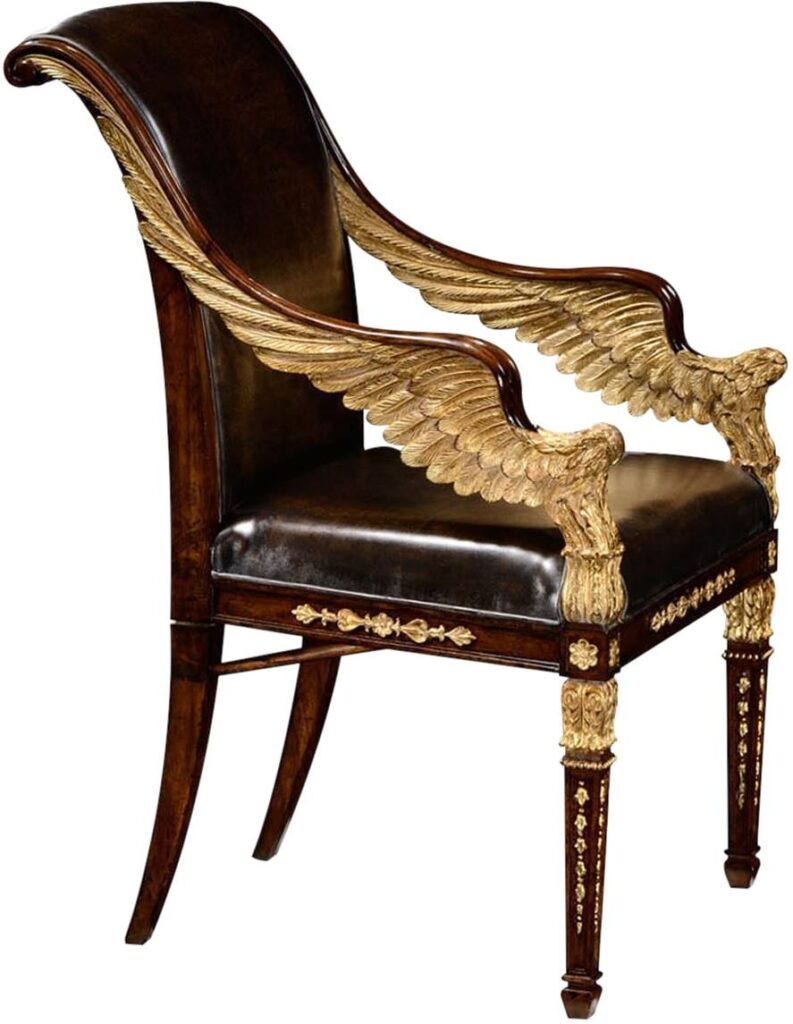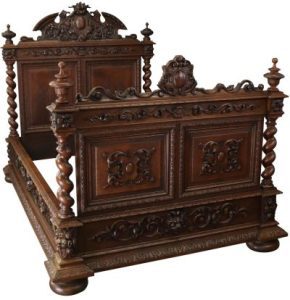Mini Cart
EuroLux Home
Exploring Antique Furniture and Home Decorating Ideas

How to Fix Scratches on Antique Furniture
As part of our series on antique furniture restoration tips and tricks, I made this YouTube Video about how to easily fix wood blemishes, watermarks and scratches on antique furniture using furniture crayons. It is a question we hear quite often from friends and other people who have antique furniture. Perhaps they've accidentally scratched the wood moving the piece from room to room, or perhaps they have inherited a beloved heirloom that needs a little TLC.
In any case, we all know that we get a few wrinkles as we age! So here’s how you can do a little touch up and hide that blemish. This also works for new wood furniture that might have some superficial dings.
A Video on How to Fix Scratches
This is the video I made on YouTube about how to use furniture crayons to disguise scratches or other marks in the wood. I’ll also give a summary below.
There are various furniture crayons available, but Greg and I like to use Blendal sticks. Then we use Mohawk Tone Finish to set the crayons.
In the video example, I show how to use the furniture crayons to help with two different blemishes on an antique buffet or server. One is a gouge and scrape to the finish and the other one is a wear spot.
Using Crayons to Fix Scratches
Here’s the secret: When you use your furniture crayons, you must apply several different colors, rather than try to exactly match one color of wood. This is because aged wood isn’t one color, it has earned a patina of time that is subtly beautiful. And even new furniture crafted in antique style is often distressed so the wood looks aged.
So for this antique buffet in the video, I use a dark brown furniture crayon, a red one, an even darker brown one, and a black. The black is probably the most important one!
As I work the crayons into the wood, I’m going with the grain of the wood and I keep changing colors, adding a little of one color then a little of another. I rub it in with my fingers. It’s all about being patient and keep applying color until you feel like you have really camouflaged it in.
Keeping Your Wood Grain Healthy
As I said, black is important and I use it to give little grain lines, feathering it with my hand and putting a little more pressure on to smudge it in. Don’t be afraid to mix the colors because that’s what gives you the visual depth. Antique pieces do have different layers and shades on the patina of the wood from natural aging. They are not uniform in tone, and that’s part of what makes a piece of antique furniture look so wonderful.
Be sure to always use your fingers to rub along the same grain as the wood. I keep adding layers of color until I feel like I’ve made the match. You’ll see that in the video I’m really taking my time and using a lot of colors until I feel like it’s going to blend in with what’s there. Still, I fix both marks in less then 10 minutes, so it's pretty easy! If you are working on an area that has a lot of carving, you might need to use a toothbrush to get into the all nooks and details of the carving.
Tone Finish
Then I stand back and look at the whole piece. I know I'm finished when the area I worked on doesn’t jump out at me! Finally I use Mohawk Tone Finish to set the furniture crayons. We like to use the satin variety rather than a shiny one, because we find it blends in better.
I shake it to mix up the product and then do a test spray to make my nozzle is spraying evenly. Then I spray a really light mist. I let it set for just a minute and then give it another very light mist again. Sometimes you have to do two passes, especially when it’s a bigger chip or ding. But after the tone finish, you can’t really see that there was a problem there at all. When this dries, the work I’ve done really will have blended in. The blemish doesn’t jump out any more!
DIY Ways to Fix Scratches
Fixing deep scratches in wooden furniture can seem like a daunting task. Whether it's a lighter piece of furniture or something made from dark wood, these tips will be able to help you repair scratches. A quick DIY refinish of your scratched area, whether it's with a cotton swab, dry cloth, or simple furniture polish can be all you need to fix those pesky furniture scratches. We've even seen folks use a paper towel on the affected area to repair those wood scratches and scuffs.
If you have any questions about how to fix blemishes, watermarks and scratches on antique furniture using furniture crayons, please do leave a comment in the comment box below!



